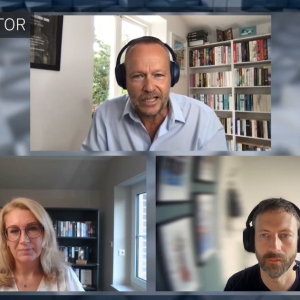Lacking the burden of legacy, software developers and enterprise customers across China may redefine the market for enterprise software, as they utilize SOA architecture and BPM technology as their starting points.
Haren’s company, founded in France, with headquarters there and in Silicon Valley, serves three fairly distinct markets. Best known for business rules management, Ilog also develops technology for visualization and supply chain optimization.
Having maintained both marketing and development presence in Singapore for 15 years, it is now jumpstarting its presence in Shanghai. Haren compared notes with us regarding his observations on the technology business climate in both areas.
Q: What is Ilog’s presence in Asia?
A: We’ve had 35 to 40 people in Singapore for over 15 years. We now have 60 people in Shanghai, which we will soon expand to 100. At this time, we only have 2 people in India, as we cannot expand in all countries at once.
With Singapore at least 95% Chinese and very bilingual, it has been the most westernized city in the region. Initially we based ourselves there, not only as one of the most advanced markets in the world and a place to outsource development, but as a platform to penetrate China. Today, some of our Singapore staff has migrated to China to lead our efforts there, and our COO moved from San Francisco to Shanghai last July.
Q: How would you compare costs and availability of talent in Asia?
A: There is roughly a 2x cost difference between Singapore and Shanghai. But Shanghai does not typify China, as I’ve heard that you can find cities that have a 5x cost advantage over it. To place the numbers in perspective, Singapore today remains about 1.5 to 2x less expensive than France and North America, even with the weakened US dollar.
But our goal in going to China was not to decrease our costs, although temporarily that will happen. Instead, it is the presence of mathematicians and other technical skills. Finding qualified people in the west has become more and more difficult. The glimmer of being a software developer has faded in the US and Western Europe as young people have become scared of competing with the Indians and Chinese.
And with 2% unemployment in Singapore, it is becoming hard to find the right people there as well. Not because they don’t produce them, but because there is so much demand for them from global banks that for now still feel more comfortable basing Asian operations there rather than in China. We have built a partnership with the Nanyang Polytechnic Institute [in Singapore] where they have trained over 700 students in our BRMS, to help cultivate talent.
Skills and the growth of the market are why we went to China. There is an unbelievably vibrant economy in software that is invisible to the west.
Q: What do you mean by an invisible software economy?
A: The Chinese are writing software for the Chinese. Look at the credit card market. Today there are 3 million credit cards in China, and in five years, they are expecting over 100 million. They are now designing credit card approval systems to handle all that. They read about social networks, and now we’ve seen one social network numbering over 30,000 Chinese developers.
They complain that typical CRM and ERP systems don’t reflect the way they do business. For instance, they have hierarchical approval chains [that default to the boss], which don’t always work. You cannot always set default approvals to the boss, who might lose face if there is a wrong decision. And ERP systems have predefined processes that cannot always be easily adjusted to fit Chinese practices. There are hundreds of examples like this.
And so they are designing their own systems. They are starting with the latest technologies and practices. They have read about SOA, BPM, and J2EE, and they are applying what they have read in books. One customer deployed over 3000 business rules in one quarter.
Every six months, things seem to change. Last year at a conference in Singapore, they were pretty quiet. This year, they were very confident, as several banks spoke on how they were applying SOA. A Gartner analyst at the event was floored, remarking, They are actually implementing the practices that we write about.
Q: Do the Oracles and SAPs of the world have something to worry about?
A: Oracle and SAP are there because international companies are already there. Outside of that, their penetration remains very low because of the cultural misfit of many of their features. Maybe we’re not seeing much packaged software in China because we’re talking to the wrong people. But all the partners that we work with are building their own packages with SOA, so the pieces can be changed more easily.
Q: How do you price software in China?
A: When you answer questions on how much your software is, they will always say it’s too expensive. You have to explain the value that you are trying to bring, and how your product will help them grow.
In our case, we are very profitable in China. We fund our Chinese operations based on our sales there. When we are asked about pricing, we explain that we are building a partner ecosystem, and tell them that we reap only a fraction of the partner’s revenues. When I explain that, they usually respond with silence or say it’s OK. Q: Given problems with software piracy, are you worried about IP infringement?
A: The situation is not as bad as it looks. As long as Chinese companies hope to sell globally, they cannot afford to violate copyrights. And, as they build their software industry, Chinese companies are going to respect IP more because most of them dream of a day when they will export software to the rest of the world.






